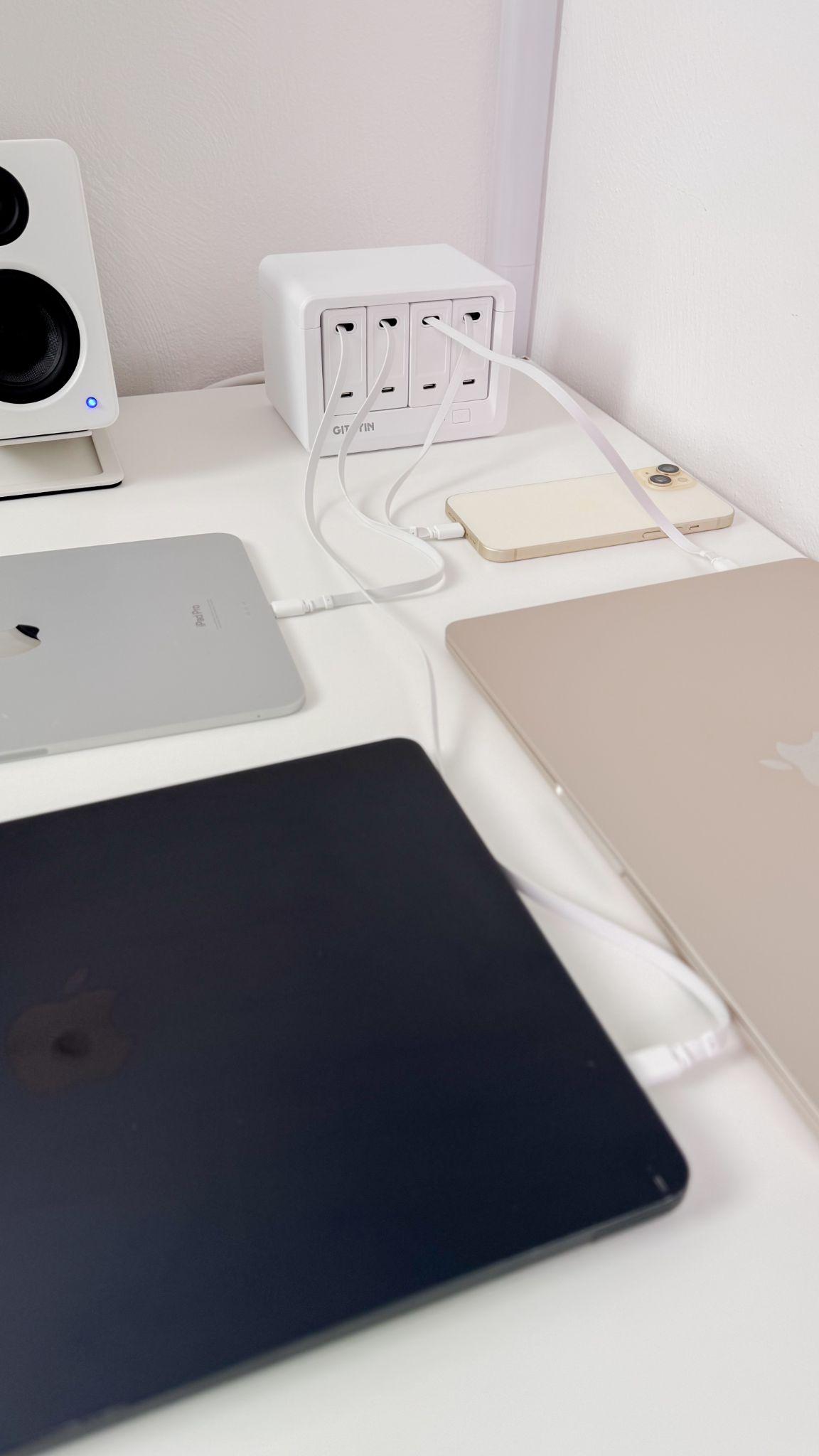Why Charging Habits Matter
Every night, countless phones, tablets, and smartwatches end up plugged in around the house. But the way we charge them—often with a mess of single-use chargers—has a bigger impact on the planet than most of us realize.
1. Reducing Electronic Waste
Every year, millions of chargers are discarded, often because new devices come with new plugs or standards. These outdated chargers pile up in landfills, adding to the global e-waste problem.
Charging stations help break this cycle:
- One replaces many: Instead of 5–10 separate chargers, one hub powers them all.
- Durability: Quality stations are built to last, reducing replacement frequency.
- Universal use: USB-A, USB-C, and AC outlets mean one hub works across multiple generations of devices.
For example, the Gitryin Desktop Charging Station can charge up to 12 devices at once, helping families or offices cut down dramatically on the number of chargers they need to buy and eventually throw away.
2. Lower Energy Consumption
Traditional chargers often continue to pull electricity even when devices aren’t attached—a hidden waste known as vampire energy.
Charging stations address this with:
- Smart power delivery that regulates flow only when needed.
- Fast, efficient PD charging (like Gitryin’s 40W and 65W options), which shortens charge cycles and lowers overall consumption.
- Surge protection to prevent unnecessary energy loss and protect devices from damage.
A household swapping from multiple inefficient chargers to one efficient charging station could see meaningful energy savings over time.
3. Less Plastic, Less Packaging
Every individual charger requires plastic casing, cables, and packaging. Multiply that across households, and the environmental footprint becomes huge.
By using one station instead of many, households can:
- Reduce plastic use.
- Cut down on packaging waste.
- Simplify their space, aligning with eco-conscious minimalism.
The Gitryin Charging Station, with its retractable cable design and compact build, directly supports this goal—eliminating messy cords and the need for extra adapters.
4. Supporting Sustainable Living Spaces
Eco-friendly living isn’t just about energy—it’s also about creating spaces that encourage well-being and less waste. Charging stations consolidate power into a single, organized hub that complements minimalist or sustainable home setups.
For families, this means fewer wall outlets taken up. For students or professionals in small apartments, it means maximizing desk or bedside space. The Gitryin Charging Station, with its angled plug and space-saving form factor, is a good example of how design can balance functionality and sustainability.
5. A Balanced Market View
While Gitryin stands out with its mix of safety certifications (ETL, surge protection) and multi-device support, the broader market offers many sustainable choices:
- Wireless pads for a cleaner, cord-free look.
- Solar-powered hubs for those seeking renewable options.
- Compact travel chargers for reducing device clutter on the go.
The point is not that one brand solves everything, but that switching to charging stations in general is a smarter, greener alternative to relying on dozens of single-use chargers.
Conclusion: Small Choices, Big Impact
Replacing traditional chargers with a charging station might feel like a small step, but when scaled across households worldwide, it can significantly reduce e-waste, save energy, and cut down on plastic use.
For anyone looking to make the switch, solutions like the Gitryin Desktop Charging Station combine multi-device efficiency, fast charging, and safety features, making them an eco-conscious choice without compromising on convenience.
By rethinking how we charge, we’re not just powering our devices—we’re making a positive impact on the planet.

